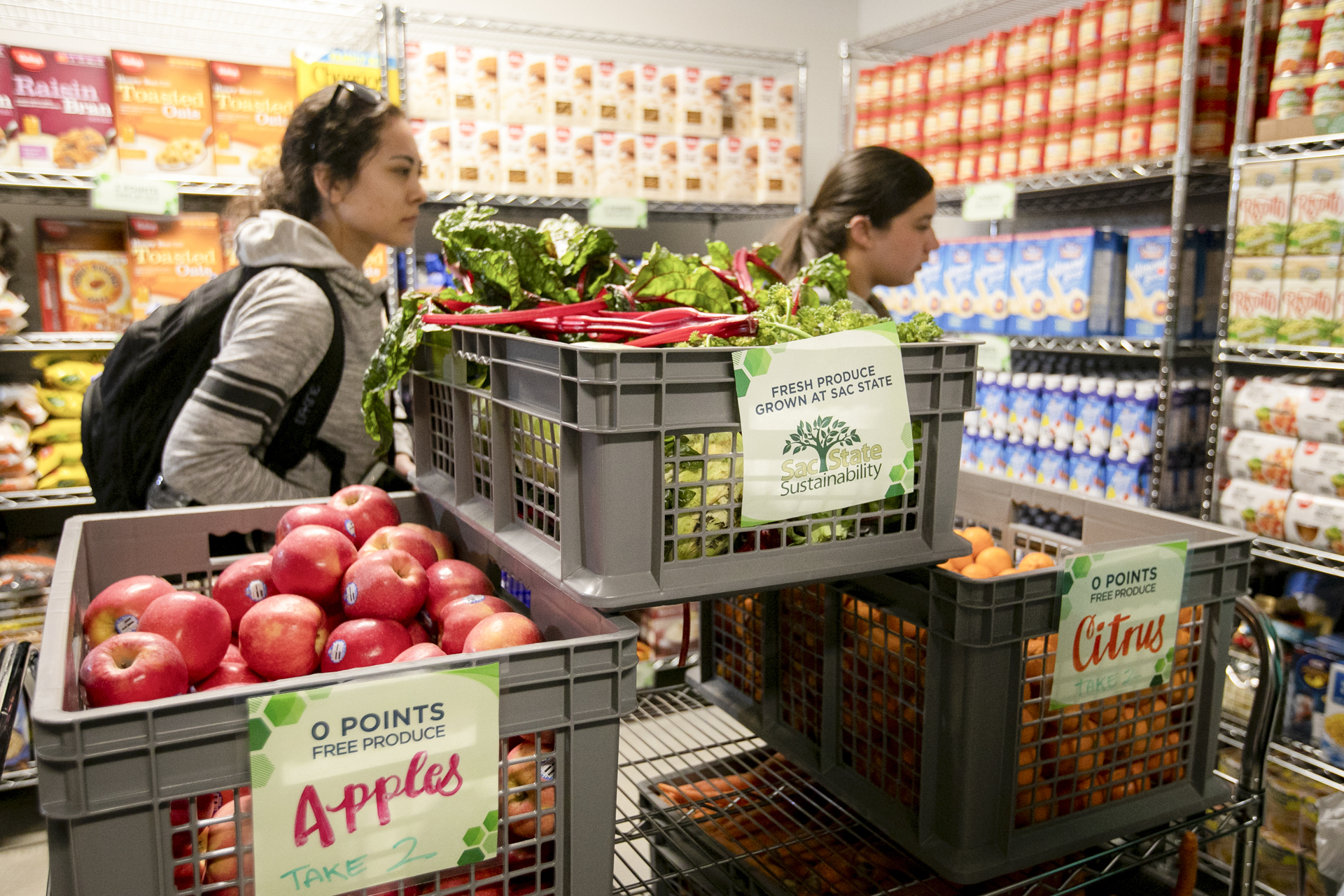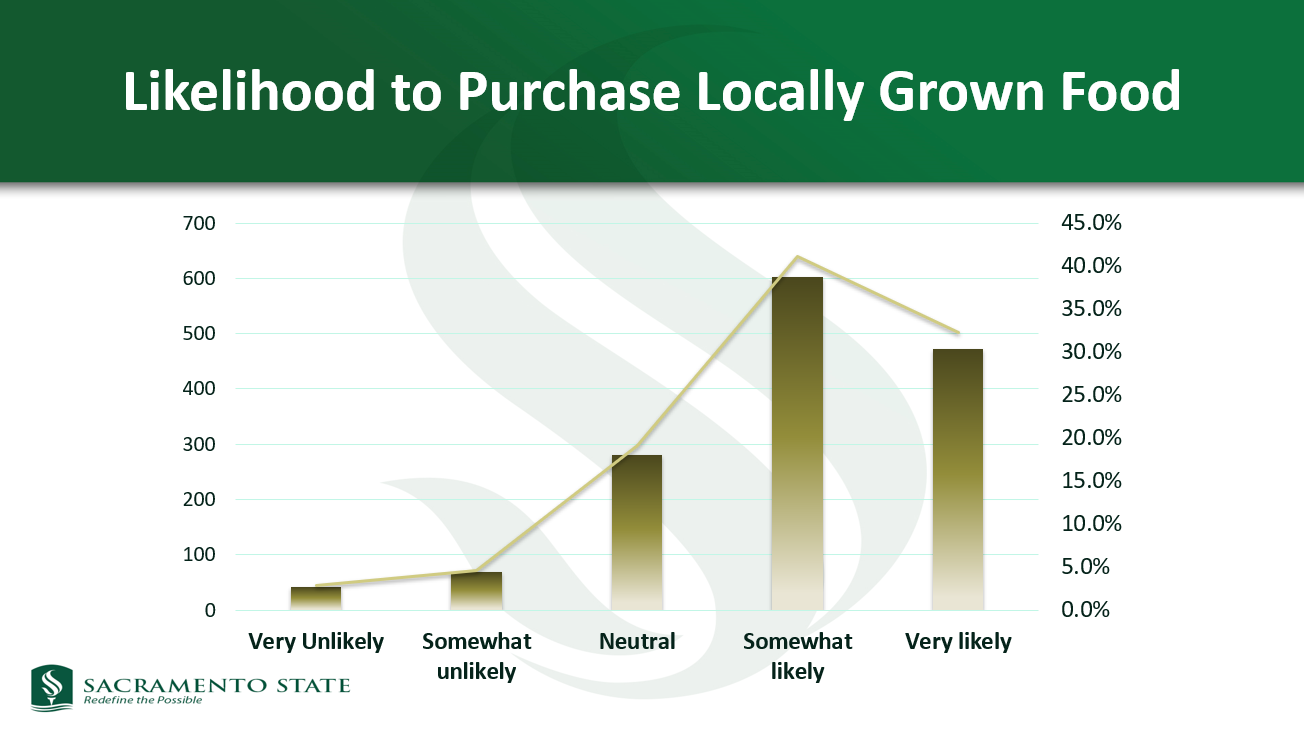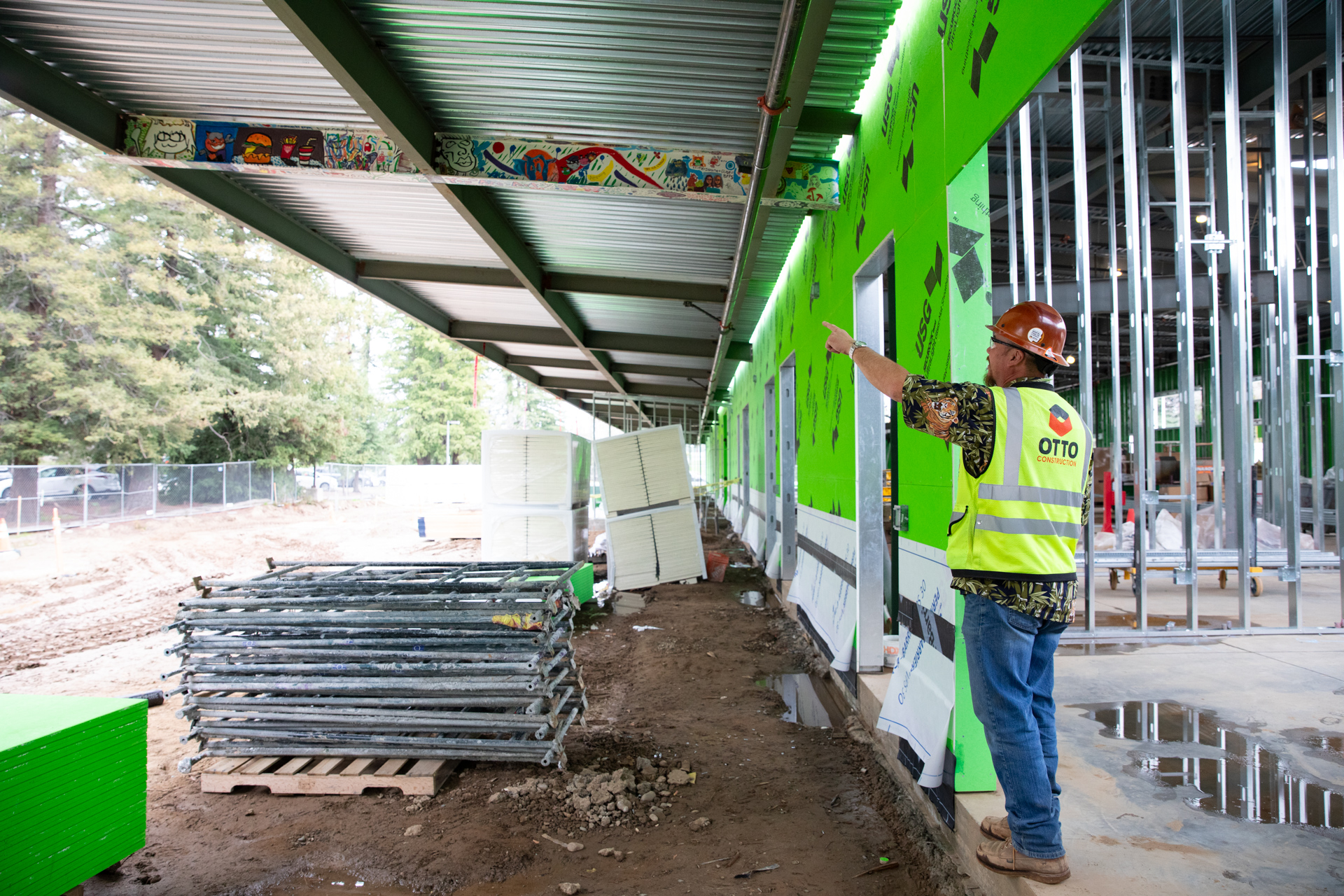Story Content
Sac State research shows strong regional support for buying locally sourced food

February 23, 2024
More than 75% of Sacramento area shoppers have purchased locally grown or produced food, and are more likely to do so if provided information about the products or producers, a new Sacramento State survey has found.
The survey, released Feb. 15, stemmed from a partnership between Sac State faculty and the California Grocers Association (CGA) aimed at helping the state’s grocers connect with their communities and support locally grown products.
The results come amidst a growing emphasis on food localization to support area economies as well as promote environmentally sustainable practices.
Thompson, along with fellow Nutrition, Food and Dietetics Professor Seunghee Wie, partnered with CGA President and Sac State alumnus Ron Fong to study consumer preferences for purchasing local food and products as well as potential barriers to buying local.
“Our research brings the idea of strengthening the relationship between the grocer and the consumer through local food and the farmers that grow the food for the stores,” Thompson said. “Food is always the way to bring people together.”
The researchers surveyed 1,465 people living in Sacramento, Yolo and Placer counties in February and March of 2023, finding that:
- 52.2% purchased locally grown/produced food sometimes, and 22.9% always purchased local.
- 73.3% would likely purchase local food items if information about the products or producers was provided.
Supporting the local economy and area farmers was the top reason respondents cited for buying local, followed by environmental sustainability and food safety.

Other major influential factors in purchasing local foods and products included price, whether the item was on sale, the presence of informational and nutritional signage, and meeting with farmers and vendors.
“Based on our research results, customers are interested in the growers’ journeys,” Thompson said.
Providing more information about locally grown products and the farmers is a way grocers can better connect with customers and foster a sense of community in their stores, the researchers added.
“Why not do a farmer’s market in the parking lot on weekends and bring in the farmers so customers can talk to them? Or have a meet-your-farmer night where they can show recipes for the food they’re growing?” Thompson said.
The study was part of the 2022-23 Anchor University Collaborative Research Fellowships, which support research collaborations between the University and community partners that benefit the Sacramento region.
The research is done through surveys conducted by the Sacramento Regional Survey Panel, a partnership between the Institute for Social Research (ISR) at Sacramento State and the civic leadership organization Valley Vision.
Wie and Thompson said the ability to survey Sacramento area residents was an invaluable tool for their research.
“We can have a research idea, but as social scientists it’s always a challenge to collect data,” Wie said. “Many faculty working in social science need the data.”
Conducting surveys is not only costly, but it can be difficult to find enough willing respondents to produce valid and reliable results.
“This fellowship was the answer to all our dreams,” Kelly said.
The potential impact of partnering with the CGA – a non-profit, statewide trade association representing over 300 retailers with more than 6,000 brick-and-mortar stores, as well as 150 grocery supply companies – is substantial. California has 306,035 people working in supermarkets and grocery stores, according to the organization.
“The grocery industry is the second largest employer in California after government,” she said.
The food localization research study wasn’t the first time the University has partnered with California grocers. The CGA reached out to Sac State in the spring of 2021 to help create a diverse, knowledgeable pool of employees who can work in grocery management.
To do so, Wie and Thompson developed a grocery management certificate focused on how to purchase and merchandise products. The program offered its first class last spring. Sac State has one of only two such programs in California.
“A lot of our students work in grocery stores while going to school,” Thompson said. “They may never have thought of a career in the industry, so we just want to give them as many options as possible.”
Media Resources
Faculty/Staff Resources
Looking for a Faculty Expert?
Contact University Communications
(916) 217-8366
communications@csus.edu


